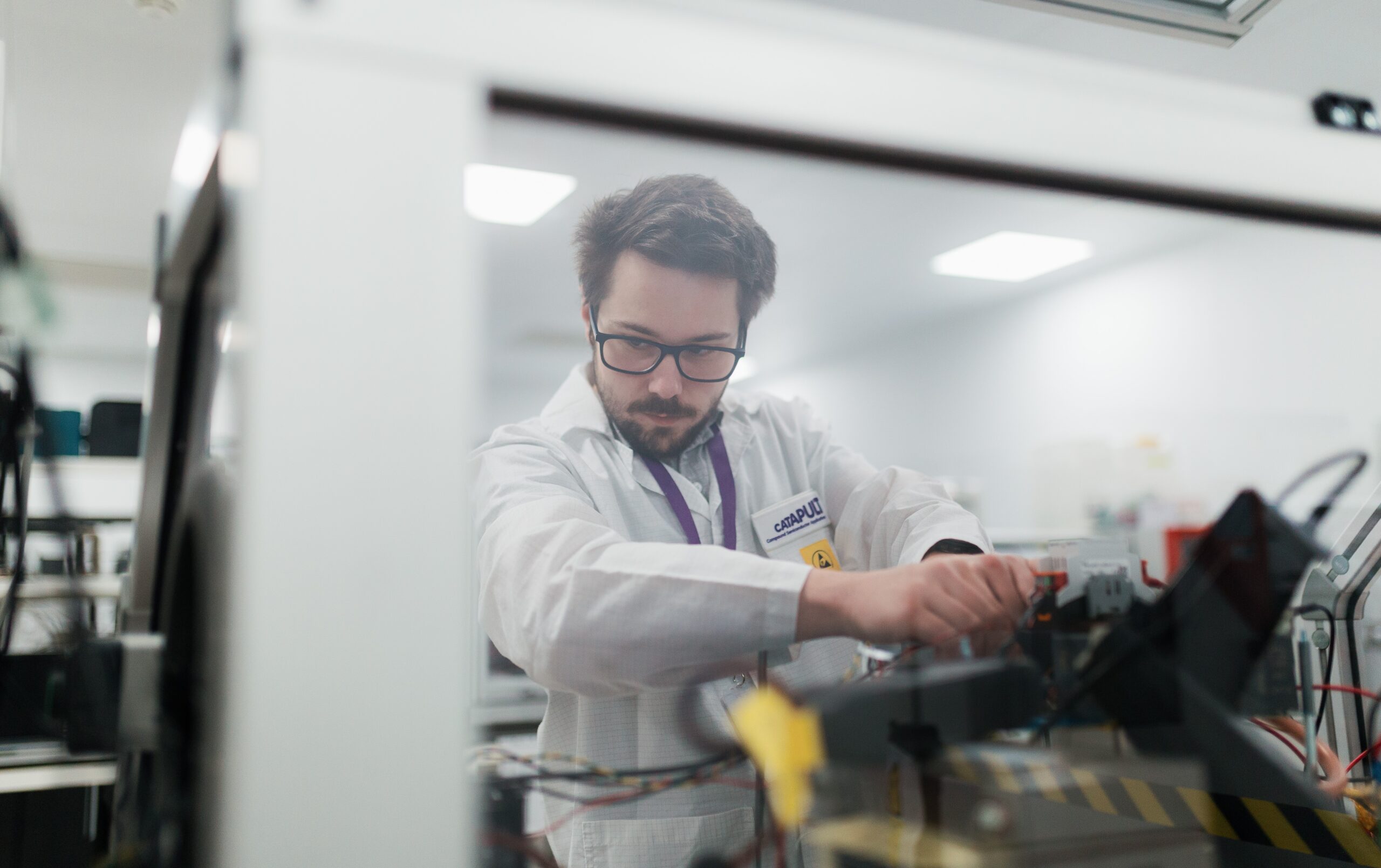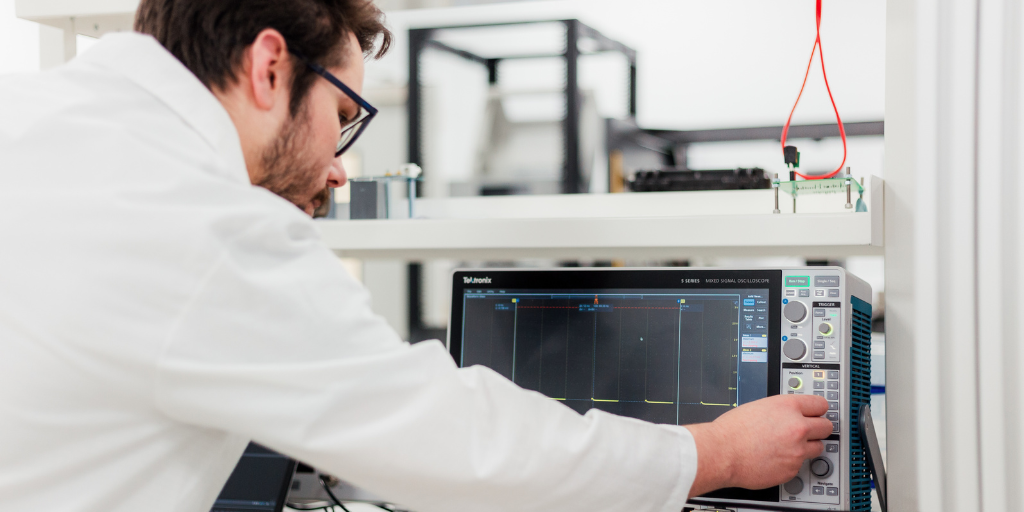How did you get into engineering?
My dad and grandad both studied electrical engineering. From an early age, I had electronics kits every birthday and Christmas. I didn’t understand how electronics worked back then, but I wanted to build things.
I went to school and college in Merthyr Tydfil. To become a professional engineer, I knew I needed A Levels in maths, electronics and applied sciences. But there were distractions and college felt like something I had to do, not what I wanted to do.
My results weren’t what I needed to start a bachelor’s degree, so I did a foundation year at Swansea University first.
That year was a gateway. At university, electrical and electronic engineering became so much easier to understand. I was in the right place with the right people and enjoyed studying.
After I graduated, I became a research and development (R&D) design engineer at Microchip. The role gave me experience of working on projects related to high-power electronics. I learnt from experienced engineers and grew my general engineering skills – leading projects, giving presentations and writing reports.
Tell us about your role at CSA Catapult
I wanted to move further into power electronics so when I saw the opportunity to work in a dedicated team, I applied.
Here, I do a lot of CAD-based design to assist in high-power device testing, such as printed circuit board (PCB) design and 3D modelling. I also model discrete wide-bandgap devices to simulate key factors in power electronics: conduction losses, switching losses, and power ratings, to determine device performance and efficiency.
High voltage testing is great. We have exciting capabilities in the labs at CSA Catapult – Double Pulse Tests (DPT), High Temperature Reverse Bias (HTRB) testing, and device characterisation.
We use the test equipment and our designs to meet different project requirements or to test third-party devices. Lots of our projects have an impact on electric vehicle design and high-power conversion systems.
What has been a career highlight for you?
Working on @FutureBEV. We developed modules to support BMW’s transition to SiC-based power electronics for future generations of battery electric vehicles (BEVs).
Having a mix of power electronics and packaging experience from my last job helped me join the Catapult.
My first piece of work was to make a high-voltage Double Pulse Test setup for FutureBEV power modules and to characterise them.
Moving from design to testing was exciting. We used large PCBs, huge capacitors and massive inductors. That was my best moment so far.
What type of projects are you working on at the moment?
I’m working on internal projects at the moment. We are creating virtual components, based on device datasheets and real-world device characterisation then dropping those components into a circuit schematic for transient simulations.
Working on virtual models of physical parts helps us test and understand how the device behaves, without setting up expensive physical test rigs that take a long time. We can use simulation software to get a rough estimate in a day.
Then we can analyse the data to obtain key characteristics as I mentioned previously, conduction and switching losses (lost as heat), maximum power ratings, device efficiency and dynamic behaviour in general.
What emerging technology are you most excited about?
Artificial intelligence (AI) catches my eye. It’s made a massive impact in the past few years and we’re already starting to utilise it. Whether it’s social media or ChatGPT, we consume so much generative AI now: music, photos and videos.
There’s also sub-sections like autonomous AI which is used in self-driving vehicles and in automated production line robots.
I don’t think it will ever replace the human brain. There will always be a need for human intervention, instructions, programme bugs or change requests. But it will be interesting to see where that goes and how it can make our lives easier.
In terms of current internal projects, we are working with AI to provide optimised design solutions (such as power module design) in a certain set of defined parameters.
This tool promises to speed up the design phase, saving on time and costs for the Catapult, then we hope to use the tool as a case study for customers, who can benefit in the future.
What advice would you give to students who’re thinking of becoming an engineer?
I really discovered power electronics at university because of the people around me and the content I studied. You don’t have to rush into your career. You can find the things that interest you as you go.
When that inspiration comes, be open, forward, and excited about what you’re doing.
Most importantly, be proactive. Ask questions, communicate with people and make yourself known. That’s how I got my first job – my future manager came to Swansea to talk about engineering in South Wales.
Gain as much knowledge as you can from the people around you and grow your network. It will help you get to the next level; whatever you want that to be.






